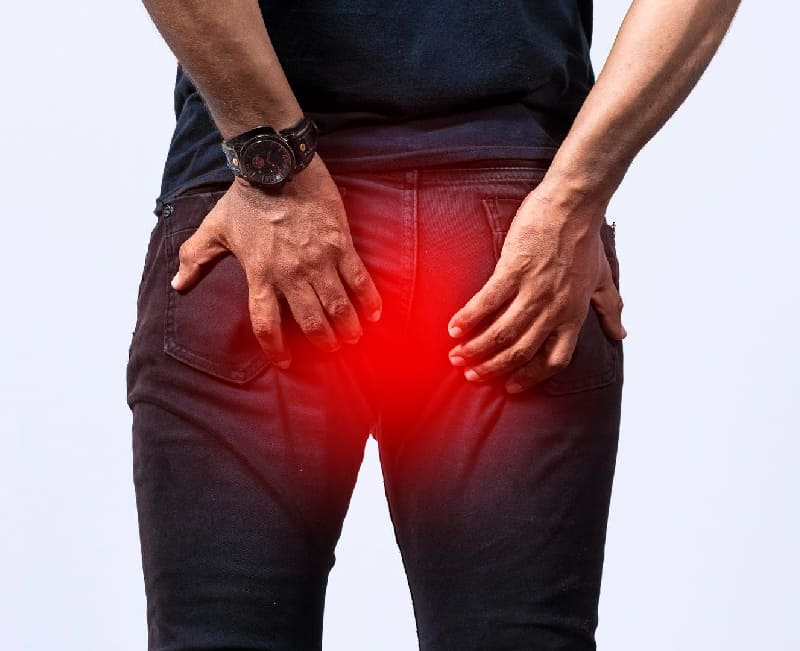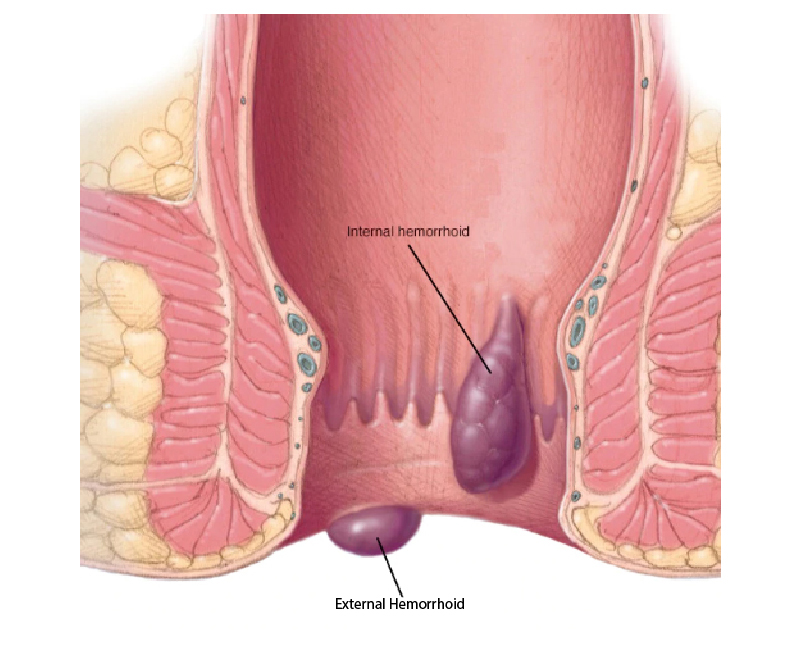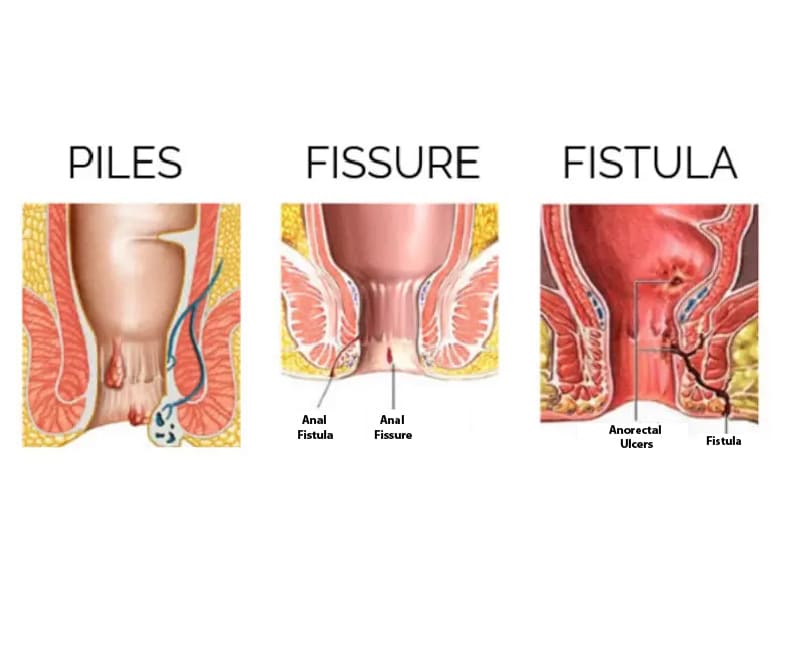Fissure, Fistula, Piles Surgery

Understanding Piles (Hemorrhoids)
Piles, also known as hemorrhoids, are one of the most common ailments affecting people worldwide. These are swollen veins located in the anal canal, consisting of blood vessels, elastic fibers, and tissues. The swelling can lead to severe discomfort, pain, and bleeding, particularly during bowel movements. Hemorrhoids can be either internal, forming inside the lining of the anus, or external, protruding outside the anal canal.
Causes of Piles

Several factors contribute to the development of piles, including:
Constipation: Straining during bowel movements due to hard stools increases pressure on the veins in the lower rectum, leading to hemorrhoids.
Obesity: Excess weight puts additional pressure on the pelvic veins.
Smoking: The use of tobacco can weaken the veins, making them more susceptible to swelling.
Prolonged Sitting: Spending extended periods on the toilet can also exacerbate the condition.
Symptoms of Piles
The symptoms of piles can range from mild to severe and may include:
Pain during bowel movements.
Painless bleeding, often noticed as drops of blood after passing stool.
Swelling or a lump around the anus.
Itching or irritation in the anal region.
Types of Piles
Piles are categorized into four grades based on their severity:
Grade I: Small, internal piles that are not visible outside the anus.
Grade II: Larger piles that may protrude during bowel movements but retract on their own.
Grade III: External hemorrhoids that require manual pushing back into the anus.
Grade IV: Large, prolapsed hemorrhoids that remain outside the anus and require surgical treatment.
Treatment Options for Piles
The treatment for piles depends on their grade and severity:
Non-Surgical Treatments
Banding: Elastic bands are placed around the base of the hemorrhoid to cut off blood supply, causing it to fall off within a few days. This is effective for Grade I and II piles.
Sclerotherapy: A chemical solution is injected into the hemorrhoid, causing it to shrink. This method is suitable for Grades I to III.
Surgical Treatments
For severe cases (Grade III and IV), surgical intervention is necessary:
Open Hemorrhoidectomy: The removal of hemorrhoidal tissue through traditional surgery.
Stapled Hemorrhoidopexy: This procedure involves stapling the hemorrhoid back into place within the anal canal. It is less painful and has a quicker recovery time compared to open surgery.
Laser Hemorrhoid Procedure: Laser energy is used to coagulate the hemorrhoidal tissue, minimizing pain and recovery time. However, it can be costlier and harder to control bleeding.

Understanding Fistula-in-ano (Anal Fistula)
A fistula-in-ano, or anal fistula, is an abnormal connection between the anal canal and the skin near the anus. It often develops from an abscess that has not healed properly.
Causes of Anal Fistula
Perianal Abscess: The accumulation of pus near the anal region, which can rupture and form a fistula.
Surgical Interruption: Procedures that involve incision and drainage can sometimes result in fistula formation.
Symptoms and Risks of Anal Fistula
Persistent pain and swelling around the anus.
Discharge of pus or blood.
Recurrence is common, particularly with complex fistulas.
Surgical Treatment for Anal Fistula
Video-Assisted Anal Fistula Treatment (VAAFT): A minimally invasive procedure allowing the surgeon to view the fistula tract and perform coagulation.
Seton Placement: A surgical thread is placed in the fistula tract to help it drain and heal gradually.
Understanding Fissure-in-ano (Anal Fissure)
An anal fissure is a small tear in the lining of the anus, often caused by passing hard stools. The tear can cause severe pain and bleeding during bowel movements.

Causes and Symptoms
Constipation: Hard stools can overstretch and tear the delicate skin around the anus.
Symptoms: Sharp pain during and after bowel movements, visible tear, and bleeding.
Treatment for Anal Fissure
Conservative Management: High-fiber diet, plenty of fluids, and topical gels to relax the anal sphincter. Sphincterotomy: Surgical procedure where the internal anal sphincter is partially cut to reduce pain and promote healing.
Preventive Measures and Diet
To prevent piles, fistula, and fissures:
High-Fiber Diet: Consume plenty of vegetables, fruits, and whole grains to prevent constipation.
Hydration: Drink ample fluids to keep stools soft.
Proper Hygiene: Avoid straining during bowel movements and do not spend excessive time on the toilet.
Conclusion
Piles, fistula, and fissures are common yet treatable conditions. It is crucial to seek medical advice when symptoms appear to ensure proper diagnosis and treatment. With advancements in surgical techniques and a focus on preventive care, patients can manage and recover from these conditions effectively.
For expert consultation and treatment, contact Dr. BharatKumar Chaudhary, MBBS, DNB (Gen. Surgery), FMAS General & Laparoscopic Surgeon, Trauma Specialist in Mumbai. Dr. Chaudhary offers a comprehensive approach to diagnosing and treating these conditions, ensuring optimal patient care and recovery.

